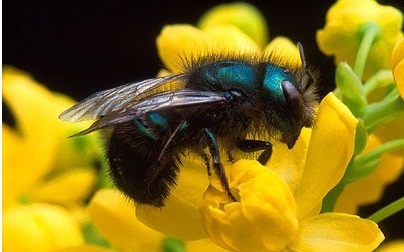Build a house for mason bees
Build a mason bee house using wooden blocks or bamboo tubes, drill holes safely with adult help, hang outside, and observe pollination and bee life.



Step-by-step guide to build a mason bee house
Kids Build a Town With Their Parents!
Step 1
Choose whether you will build your mason bee house from a solid wooden block or from a bundle of bamboo tubes.
Step 2
Use the ruler and pencil to mark evenly spaced hole centers on the wooden block or mark 10–15 cm lengths on each bamboo tube.
Step 3
With an adult's help, clamp the wooden block and drill straight holes 6–8 mm wide and 10–15 cm deep, stopping before you drill through the back.
Step 4
With an adult's help, cut the bamboo tubes to the marked 10–15 cm length.
Step 5
Make sure each bamboo tube has a closed back by keeping a natural node or gently plugging the back end with a small piece of wood.
Step 6
Sand the entrance edges of every drilled hole and the ends of each bamboo tube until they are smooth and splinter-free.
Step 7
Push each bamboo tube into the drilled holes or bundle the loose tubes together and secure them tightly with waterproof glue or strong tape.
Step 8
Attach the small scrap wood or plastic above the front as a roof and secure it so rain will stay out.
Step 9
Tie a length of string or wire to the top so the bee house can be hung.
Step 10
Choose a sunny sheltered spot about 1–2 meters above the ground near flowers.
Step 11
Hang the bee house slightly tilted downward in that spot so water can run off.
Step 12
Check your house each week for mason bees and sealed nesting tubes and write or draw what you see.
Step 13
Share a photo and what you learned about your mason bee house on DIY.org.
Final steps
You're almost there! Complete all the steps, bring your creation to life, post it, and conquer the challenge!


Help!?
What can we use instead of bamboo tubes or a power drill if those are hard to find?
Use clean paper drinking straws or rolled cardboard tubes cut to 10–15 cm and keep a closed back by retaining a natural node or plugging with a small piece of wood, and if you don't have a power drill use a long nail or awl with adult help to make 6–8 mm holes.
What should we do if the drilled holes split the wood or the bamboo tubes wobble when inserted?
If holes split or tubes wobble, reclamp and drill slowly with a sharp 6–8 mm bit, sand the edges, then pack each tube with a thin paper shim or a dab of waterproof glue and secure the bundle tightly with strong tape as in the step that pushes tubes into holes or bundles them.
How can we adapt the project for younger children or make it more challenging for older kids?
For preschoolers have them mark hole centers, sand entrance edges, and decorate the roof while an adult handles cutting and drilling, and for older kids have them measure and cut 10–15 cm bamboo, drill straight 6–8 mm deep holes, and build a removable inspection panel to check sealed nesting tubes.
What are some ways to extend or personalize the mason bee house after it's finished?
Personalize and extend the project by adding a labeled weekly observation chart to record sealed nesting tubes, planting pollinator flowers nearby, installing a slightly tilted waterproof roof as described to keep rain out, and sharing photos and findings on DIY.org.
Watch videos on how to build a mason bee house
Take a Tour of a Beehive Inspired Treehouse | Treehouse Masters
Facts about pollinators and bee houses
🧱 Female mason bees pack mud between cells to seal each egg chamber, which is why they're called "mason" bees.
🐝 Mason bees are solitary — each female builds her own nest and doesn't form hives or swarm like honeybees.
🌳 Mason bees emerge in spring and are especially excellent at pollinating fruit trees like apples and cherries.
🛠️ Mason bees nest in hollow tubes or holes; the most popular hole size for many species is about 8 mm (5/16 in).
🌼 One mason bee is often said to be as effective at pollinating as 100 honeybees, making them superstar gardeners!
How do I build a mason bee house?
What materials do I need for a mason bee house?
What ages is building a mason bee house suitable for?
What are the benefits and safety tips for building a mason bee house?


One subscription, many ways to play and learn.
Only $6.99 after trial. No credit card required



